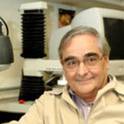Isothermal acrylamide formation in foods and asparagine-glucose model systems has ubiquitous features. On a time scale of about 60 min, at temperatures in the approximate range of 120-160 degrees C, the acrylamide concentration-time curve has a characteristic sigmoid shape whose asymptotic level and steepness increases with temperature while the time that corresponds to the inflection point decreases. In the approximate range of 160-200 degrees C, the curve has a clear peak, whose onset, height, width and degree of asymmetry depend on the system's composition and temperature. The synthesis-degradation of acrylamide in model systems has been recently described by traditional kinetic models. They account for the intermediate stages of the process and the fate of reactants involved at different levels of scrutiny. The resulting models have 2-6 rate constants, accounting for both the generation and elimination of the acrylamide. Their temperature dependence has been assumed to obey the Arrhenius equation, i.e., each step in the reaction was considered as having a fixed energy of activation. A proposed alternative is constructing the concentration curve by superimposing a Fermian decay term on a logistic growth function. The resulting model, which is not unique, has five parameters: a hypothetical uninterrupted generation-level, two steepness parameters; of the concentration climbs and fall and two time characteristics; of the acrylamide synthesis and elimination. According to this model, peak concentration is observed only when the two time constants are comparable. The peak's shape and height are determined by the gap between the two time constants and the relative magnitudes of the two "rate" parameters. The concept can be extended to create models of non-isothermal acrylamide formation. The basic assumption, which is yet to be verified experimentally, is that the momentary rate of the acrylamide synthesis or degradation is the isothermal rate at the momentary temperature, at a time that corresponds to its momentary concentration. The theoretical capabilities of a model of this kind are demonstrated with computer simulations. If the described model is correct, then by controlling temperature history, it is possible to reduce the acrylamide while still accomplishing much of the desirable effects of a heat process.
Available at: http://works.bepress.com/micha_peleg/4/
